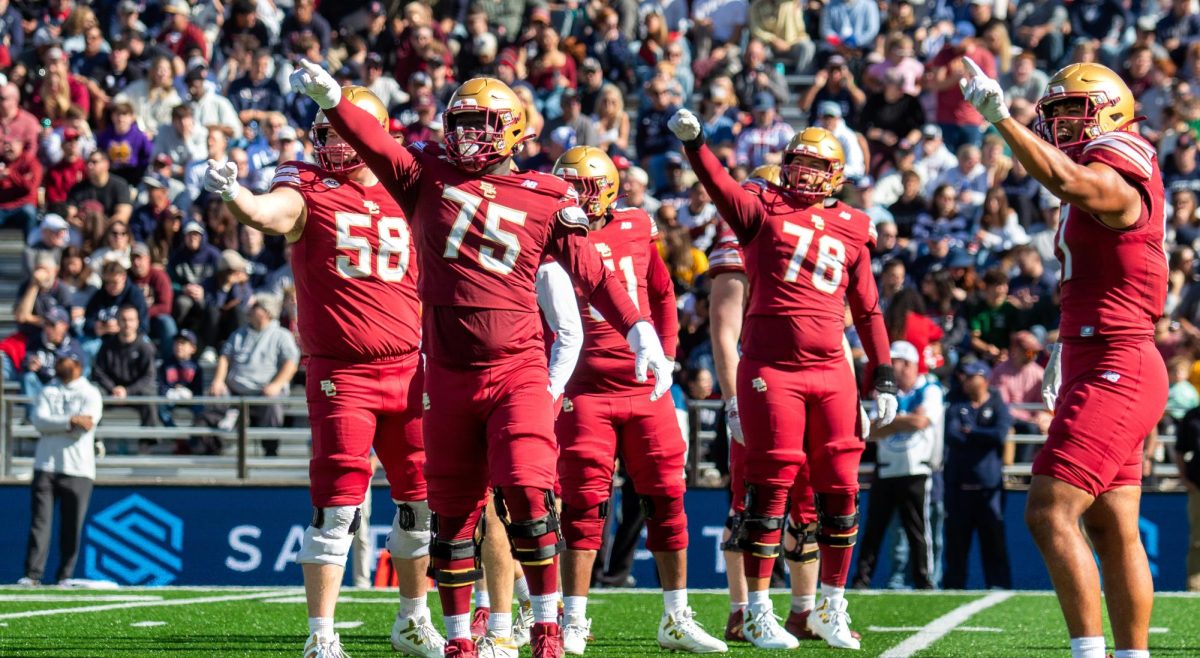“The king stay the king” – D’Angelo Barksdale, The Wire
* * *
Future college athletes across the country got their first taste of a system riddled with contradictions when they signed their National Letter of Intent (NLI) on Wednesday morning. The contract, created by the NCAA and for the NCAA, grants signees one year of financial aid, but little else.
NLIs clearly elevate the rights of administrators and coaches—namely, the groups profiting from the labor of players. If a coach decides he wants to jump ship and take an offer at another school after National Signing Day—or any day, for that matter—he is at liberty to do so. But his recruits don’t have the same luxury. It’s actually quite common for recruits to officially commit to a program, only to see the coach who recruited them take a job at another program soon after. But even if coaches break promises to players, that doesn’t change the fact that signees who want to change their mind are required to sit out the next season as a penalty and lose a year of eligibility.
The contract doesn’t offer any amenities typically included in a labor agreement. Players don’t receive health benefits, or any long-term job security, for that matter. Financial aid is offered in just one-year deals without any room for negotiation.
So why do high school seniors sign NLIs?
Well, unless they’re an All-American who’s impossible for a program to pass up on, they don’t have much bargaining power. If they refuse to sign the contract, they risk forfeiting their college careers altogether. Coaches can easily back out of verbal agreements or, more discreetly, opt not to lobby for that player to gain admission into the school. All it takes is a subjective “You didn’t meet our academic standards” to cut ties with a recruit who hasn’t signed a NLI.
* * *
“This game is rigged, man. We like the little b——es on a chessboard.” -Preston “Bodie” Broadus, The Wire
* * *
There probably wouldn’t be much outrage over these one-sided contracts if they were the only black mark on the NCAA’s record. But they are part of a much larger web of rules and regulations that aim to limit the rights of student-athletes and maximize the profits of the NCAA, which rakes in $1 billion of revenue annually.
It’s a slippery slope. What starts with the NLI can turn into thousands of hours of unpaid labor without employee benefits and eventually become post-athletic careers beset by injury and debt. Because of the NCAA’s outdated obsession with amateurism, the belief that money spoils the sanctity of a college education, college athletes don’t have worker’s compensation or limits on the length of their workweek. And when uber-competitive programs aren’t held to any restrictions on time or intensity of their workouts, the result can be deadly for some players. What’s worse, student-athletes remain powerless to change anything because they’re barred from unionizing and negotiating for better working conditions.
“College athletes are not slaves,” civil rights historian Taylor Branch wrote. “Yet to survey the scene—corporations and universities enriching themselves on the backs of uncompensated young men, whose status as ‘student-athletes’ deprives them of the right to due process guaranteed by the Constitution—is to catch an unmistakable whiff of the plantation.”
You can see contradictions everywhere in the NCAA’s system if you look hard enough. At the crux, though, is the idea that an education is fair compensation for student-athletes, even when that education becomes significantly devalued by the time commitment required for collegiate sports. Men’s basketball head coach Bob Huggins didn’t graduate a single player during his four-year tenure at Cincinnati. Now at West Virginia, Huggins, who makes $3.25 million per year, recently cashed in a $25,000 bonus for beating Kansas.
Even as scrutiny has piled on the NCAA, the organization seems increasingly unwilling to budge on even the pettiest of issues. College athletes are punished for eating excessive pasta at team banquets or accepting “gifts” like sandwiches. A decade ago, NCAA officials entertained the idea of including a clause in the NLI that allowed for recruits to decommit from a program and go elsewhere without penalties if their college coaches did the same. Now, the NCAA quickly shuts down talk of such an amenity. That’s because, after years of skyrocketing inequity in college sports, the NCAA realizes its way of life is being threatened.
But how seriously? Do the players really stand a chance against one of the most powerful institutions in America and its court-affirmed definition of amateurism?
* * *
“They shouldn’t even call this a war.” – Carver
“Why?” – Herc
“War’s end.” – Carver, The Wire
* * *
Perhaps the war would never end if it were only disorganized college athletes (well, former college athletes) up against the NCAA’s trial-tested team of lawyers. But the players have help from a legal superhero of sorts: Jeffrey Kessler.
Time and again, Kessler has fought on behalf of players to ensure free trade laws are being followed in sports markets. Kessler is the Omar Little of this story (apologies to non-Wire watchers out there), an expert in his field who reaps the benefits of his clients’ issues, but always seems to be stealing from the right people. In 1992, Kessler convinced a federal court jury that the NFL was violating antitrust laws with its Plan B system, forming the foundation for the system of free agency we know today. More recently, he helped end the lockout and develop a collective bargaining agreement. He even represented Saints’ players in Bountygate and Tom Brady in Deflategate.
This time, he’s taking on the NCAA with restraint of trade allegations in Jenkins v. NCAA. I’ve talked before about Kessler, and spoke to one of his assistant attorneys on the case about its potential ramifications. Unlike the O’Bannon v. NCAA case that recently was rejected by the Supreme Court, the Jenkins case has the potential to blow up the NCAA’s entire methodology. O’Bannon merely resulted in $5,000 stipends to cover the full cost of attendance for college athletes, while the Jenkins case is calling to replace the current system with a free market.
Kessler’s vision would finally put in place fair labor laws for student-athletes, but at what cost? According to athletic directors, paying college athletes would come at the expense of the not-for-profit sports (all except men’s basketball, women’s basketball, football, and men’s hockey). Not even the staunchest of athlete activists would wish for schools to cut countless programs in order to pay men’s basketball and football stars their fair share.
With the impending asteroid that is the Jenkins case looming over the NCAA’s head, the solution seems simple. Top NCAA officials and player advocates, like Kessler, need to get together in a room and make some sacrifices before the whole structure of college sports implodes. For the NCAA, that means allowing student-athletes the same basic services as any other employee. Namely, medical benefits, the right to collectively bargain for a better NLI contract, and the ability to profit off their name, image, and likeness.
The NCAA needs to be flexible for the sake of its own self-preservation. If the organization can somehow come to a mutual agreement with college athletes, it would be exempt from Kessler’s restraint of trade claims because the deal was collectively bargained.
An asteroid is fast-approaching, and the NCAA can bet on it barely missing the target if it wants. But in the world of sports law, it’s never smart to bet against Kessler. And upon impact, the NCAA will immediately regret not resolving the issue earlier outside of a courtroom.
* * *
“Either play or get played.” – Omar Little, The Wire
Featured Image by Meg Dolan / Heights Editor













